Abstract
STUDY OBJECTIVE: To obtain national population norms on pertinent domains of quality of life, and the relative importance of these domains to people with reported longstanding illness. DESIGN AND SETTING: The vehicle for the study was the Office of Population Censuses and Surveys omnibus survey in Great Britain. The sampling frame was the British postcode address file of "small users", stratified by region and socioeconomic factors. This file includes all private household addresses. The postal sectors are selected with probability proportional to size. Within each sector 30 addresses are selected randomly with an target size of 2000 adults. PARTICIPANTS: The total number of adults interviewed was 2033 (one per sampled household), resulting in 2031 usable questionnaires, and representing a response rate of 77%. MAIN RESULTS: Of those who reported a longstanding illness, the most common, freely mentioned, first most important effects of the longstanding illness on their lives were (in order of frequency) ability to get out and about/stand/walk/go out shopping, being able to work/find a job, and effects on social life/leisure activities. Analysis of the areas of life affected by longstanding illness, showed considerable variation in relation to the condition. For example, respondents with mental health disorders (mainly depression) were most likely to report as the first most important effect the availability of work/ability to work, followed by social life/leisure activities; respondents with digestive and endocrine (for example, diabetes) disorders were most likely to report dietary restrictions; while respondents with cardiovascular disease, respiratory, and musculoskeletal disorders were most likely to report ability to get out and about/stand/walk/go out shopping. CONCLUSIONS: These results support the current trend of developing disease specific health related quality of life questionnaires rather than using generic scales.
Full text
PDF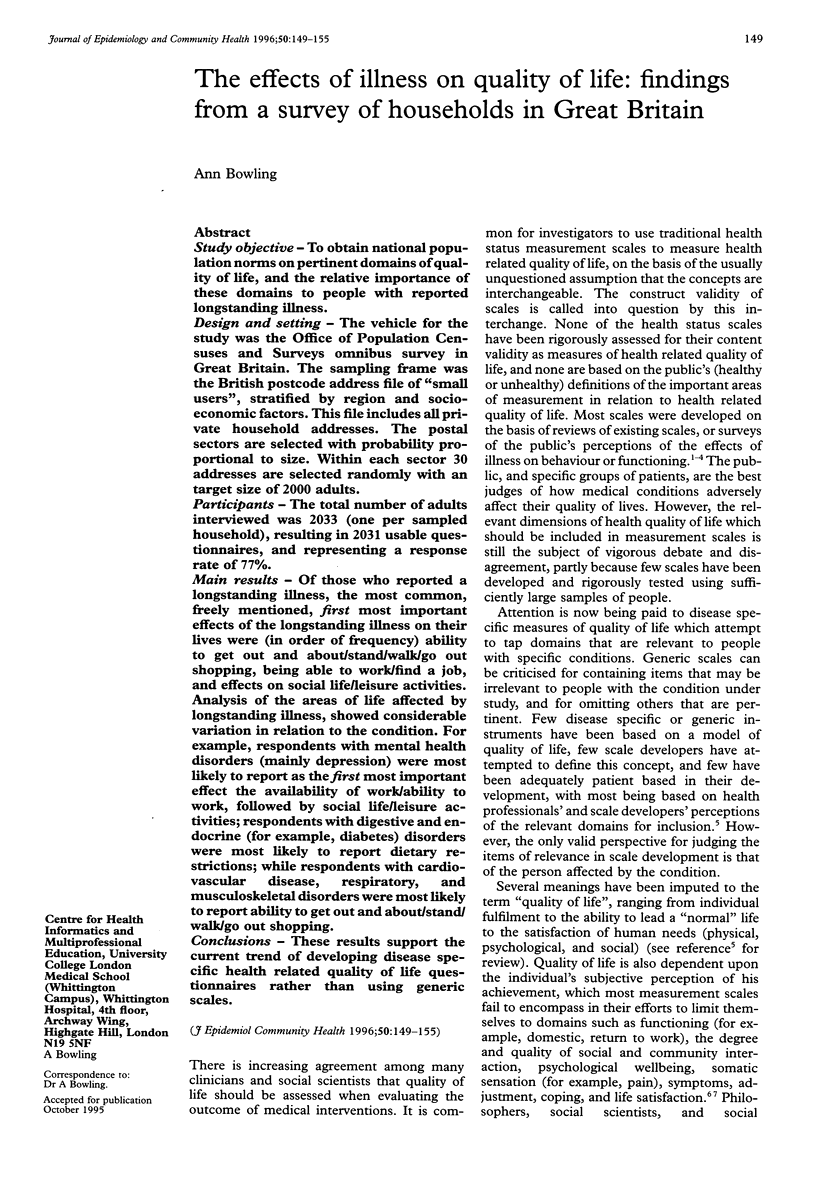
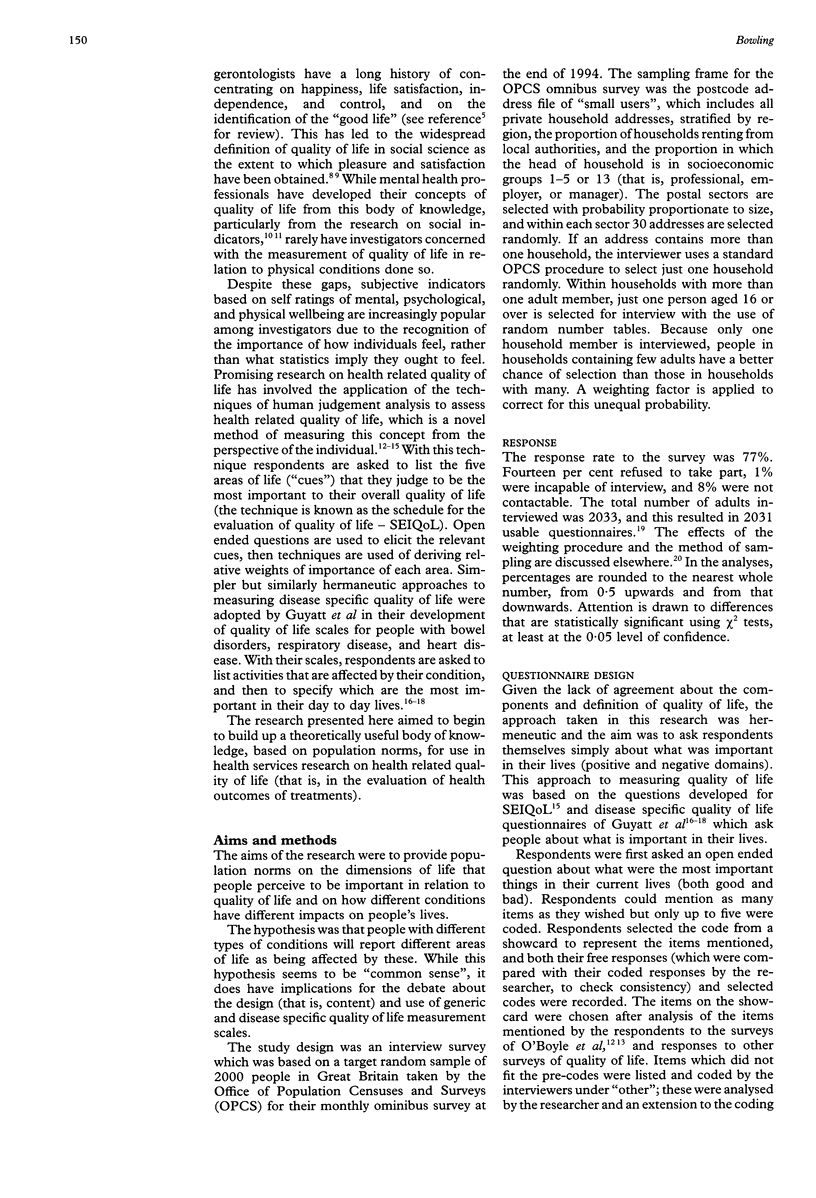
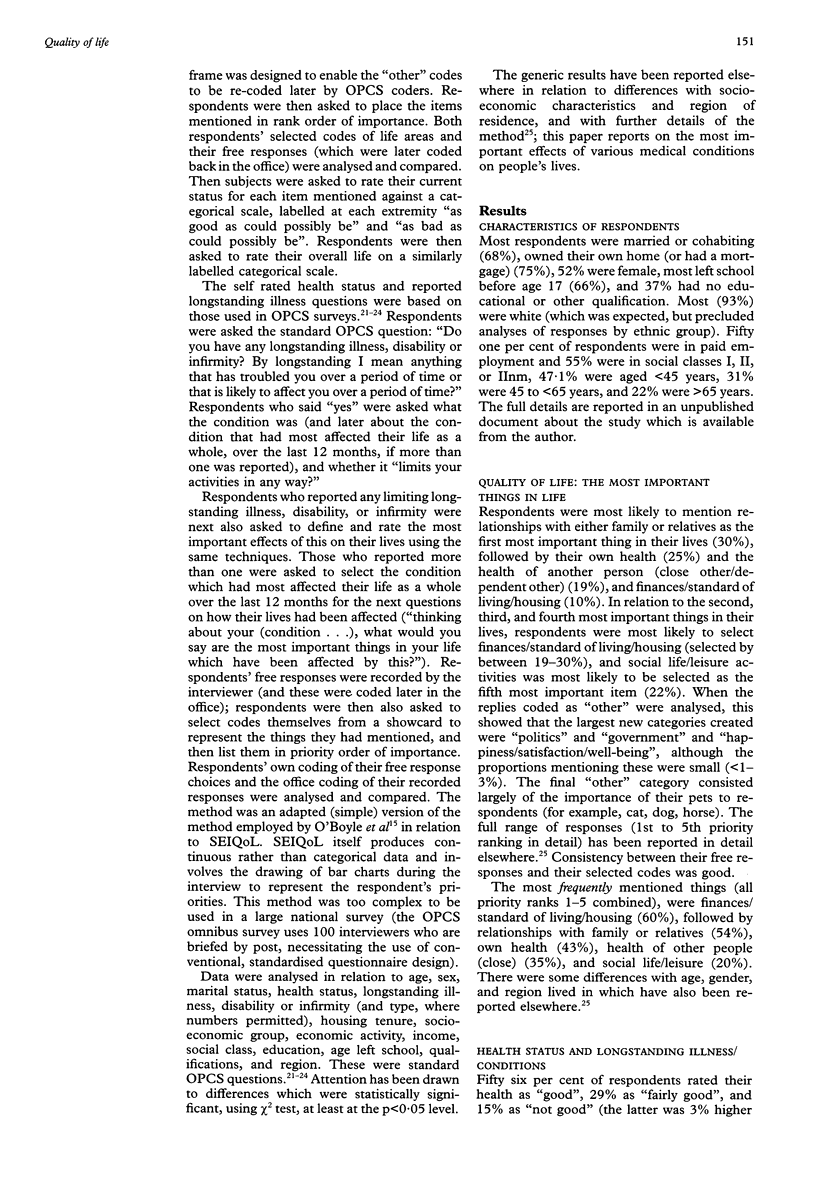
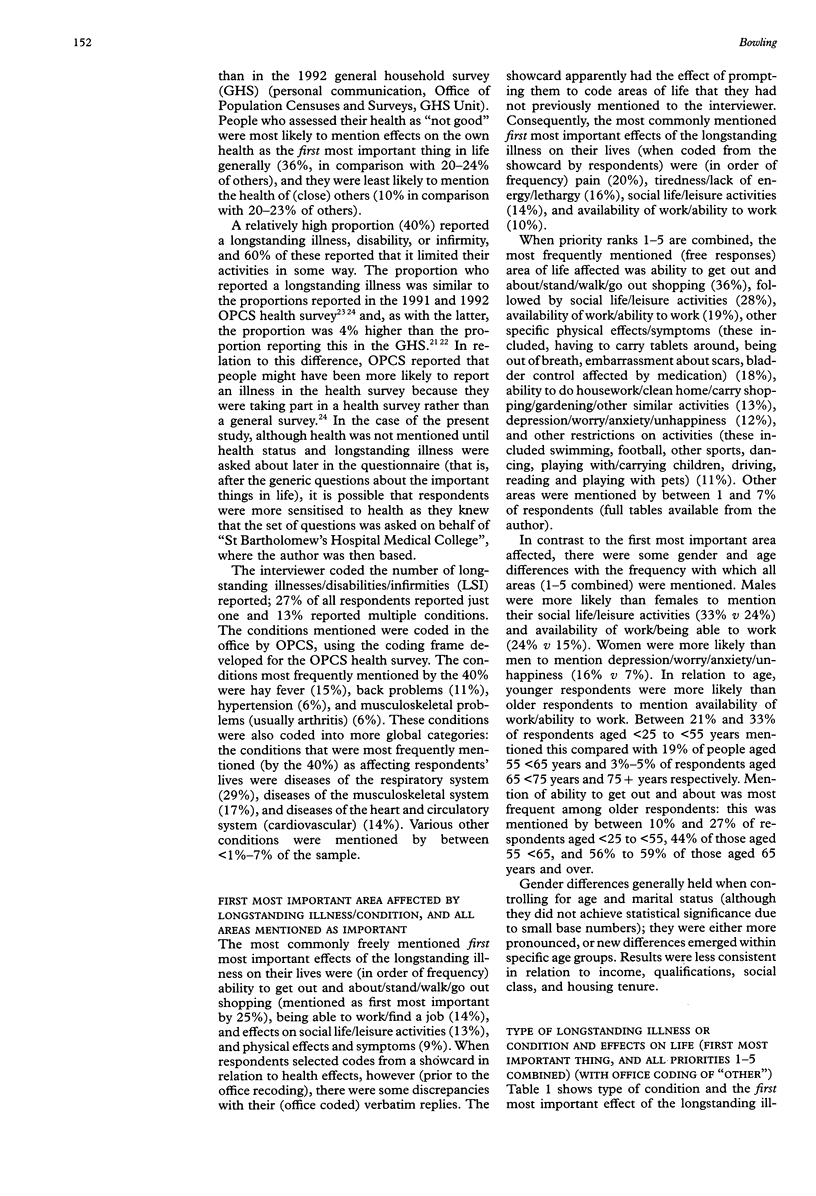
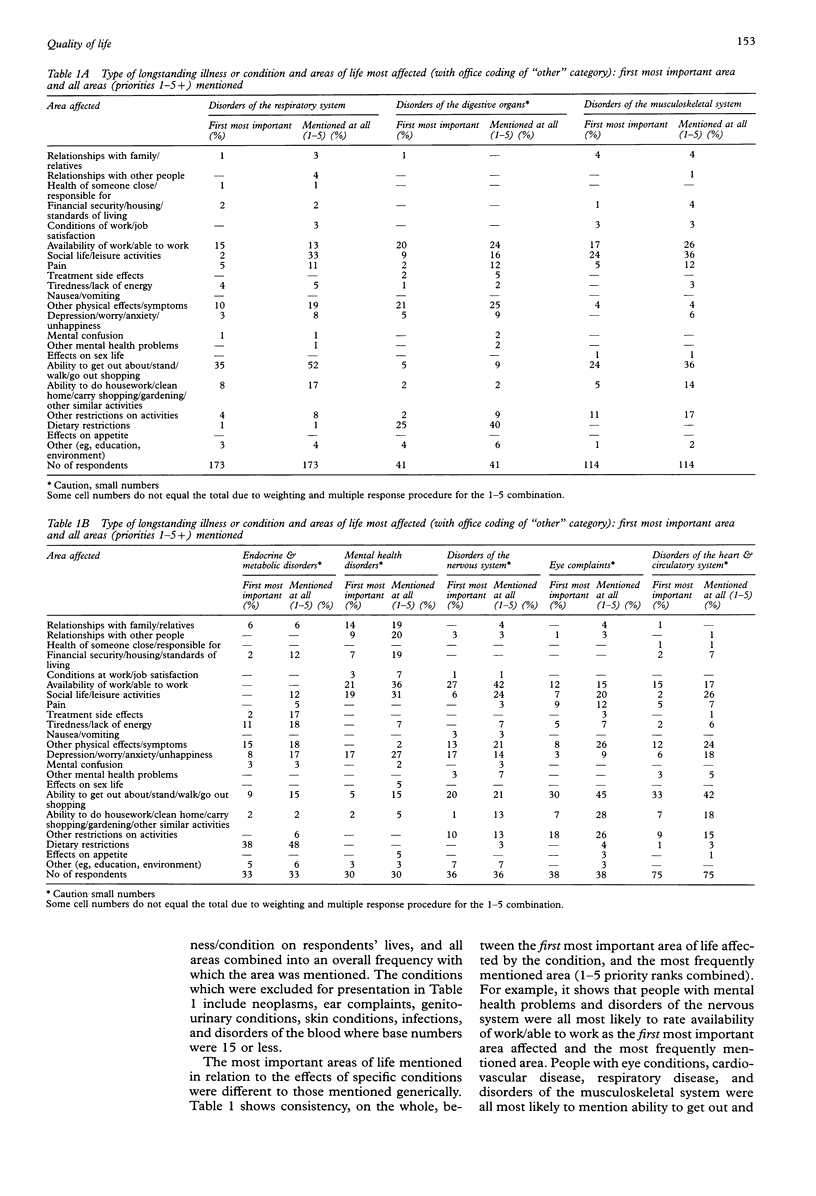
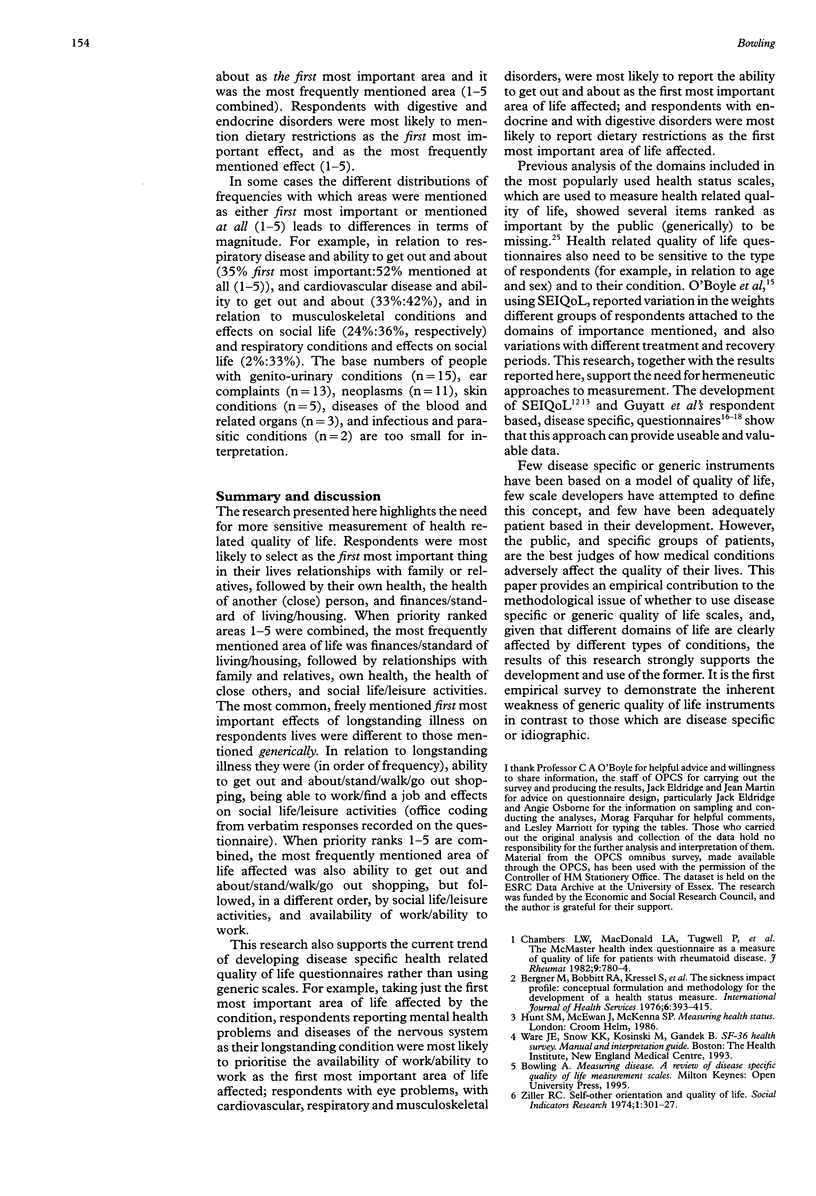

Selected References
These references are in PubMed. This may not be the complete list of references from this article.
- Bergner M., Bobbitt R. A., Kressel S., Pollard W. E., Gilson B. S., Morris J. R. The sickness impact profile: conceptual formulation and methodology for the development of a health status measure. Int J Health Serv. 1976;6(3):393–415. doi: 10.2190/RHE0-GGH4-410W-LA17. [DOI] [PubMed] [Google Scholar]
- Chambers L. W., Macdonald L. A., Tugwell P., Buchanan W. W., Kraag G. The McMaster Health Index Questionnaire as a measure of quality of life for patients with rheumatoid disease. J Rheumatol. 1982 Sep-Oct;9(5):780–784. [PubMed] [Google Scholar]
- Guyatt G. H., Berman L. B., Townsend M., Pugsley S. O., Chambers L. W. A measure of quality of life for clinical trials in chronic lung disease. Thorax. 1987 Oct;42(10):773–778. doi: 10.1136/thx.42.10.773. [DOI] [PMC free article] [PubMed] [Google Scholar]
- Guyatt G. H., Nogradi S., Halcrow S., Singer J., Sullivan M. J., Fallen E. L. Development and testing of a new measure of health status for clinical trials in heart failure. J Gen Intern Med. 1989 Mar-Apr;4(2):101–107. doi: 10.1007/BF02602348. [DOI] [PubMed] [Google Scholar]
- Guyatt G., Mitchell A., Irvine E. J., Singer J., Williams N., Goodacre R., Tompkins C. A new measure of health status for clinical trials in inflammatory bowel disease. Gastroenterology. 1989 Mar;96(3):804–810. [PubMed] [Google Scholar]
- NEUGARTEN B. L., HAVIGHURST R. J., TOBIN S. S. The measurement of life satisfaction. J Gerontol. 1961 Apr;16:134–143. doi: 10.1093/geronj/16.2.134. [DOI] [PubMed] [Google Scholar]
- O'Boyle C. A., McGee H., Hickey A., O'Malley K., Joyce C. R. Individual quality of life in patients undergoing hip replacement. Lancet. 1992 May 2;339(8801):1088–1091. doi: 10.1016/0140-6736(92)90673-q. [DOI] [PubMed] [Google Scholar]
- Zautra A., Goodhart D. Quality of life indicators: a review of the literature. Community Ment Health Rev. 1979 Spring;4(1):1, 3-10. doi: 10.1300/J257v04n01_01. [DOI] [PubMed] [Google Scholar]


